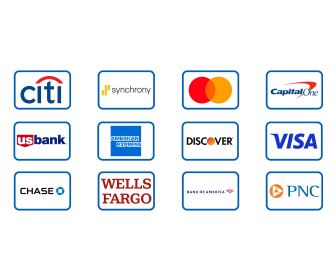Millennial Money Tips: Credit Cards Edition
Millennials are often labeled as the “debt generation,” but the truth is they’re also the most financially aware. With the right approach, credit cards can be powerful tools — not traps. Whether you’re paying bills, booking travel, or just trying to boost your credit score, using credit cards strategically in 2025 can help you build wealth, not stress. Here are the smartest millennial money tips for mastering credit cards.
1. Treat Your Card Like a Debit Card (But With Benefits)
Swiping doesn’t mean spending money you don’t have. The golden rule: only charge what you can pay off in full each month. Use your credit card like a debit card — but take advantage of the rewards, protection, and credit-building perks that come with it. Paying on time and in full avoids interest and boosts your score faster than any hack you’ll find on TikTok.
2. Pick a Card That Matches Your Lifestyle
The best credit card for you isn’t necessarily the one with the flashiest bonus. It’s the one that rewards how you actually spend. For example:
- Love dining and travel? Try Chase Sapphire Preferred® for 3x points on dining and travel perks.
- Work remotely or freelance? American Express® Gold gives 4x points on food delivery and groceries — ideal for hybrid lifestyles.
- Minimalist spender? Apple Card offers 2% daily cash back on digital payments — simple, transparent, and tech-forward.
- Budget-minded millennial? Capital One SavorOne® earns 3% on dining, groceries, and streaming with no annual fee.
3. Automate, Don’t Agonize
Millennials juggle side hustles, subscriptions, and student loans — so missing a payment is easy. Autopay is your secret weapon. Set your card to pay at least the minimum automatically (ideally the full balance). This keeps your payment history spotless and your credit utilization ratio under control — two of the biggest factors in your FICO® Score.
4. Use Rewards Intentionally (Not Impulsively)
Don’t hoard points or blow them on random gift cards. Redeem for maximum value: travel transfers, statement credits, or high-value purchases. For instance, 60,000 Chase Ultimate Rewards® points can equal over $750 in travel through partners — far better than $600 in cash back. Plan redemptions like a mini-vacation fund, not a “shopping spree” fund.
5. Protect Yourself From Lifestyle Creep
Rewards are exciting — but they’re not free money. The biggest millennial money mistake? Letting lifestyle inflation creep in because “I’m getting points for it.” If your monthly balance is creeping higher, scale back. Your goal is to make credit cards work for your lifestyle, not fund it.
6. Monitor Your Credit Health Like You Monitor Your Screen Time
You wouldn’t ignore your phone’s battery — don’t ignore your credit either. Check your reports regularly through AnnualCreditReport.com or free apps like Credit Karma. Keep utilization under 30%, avoid unnecessary hard inquiries, and celebrate progress. Millennials are now the largest credit-active generation — and the most data-driven one.
Expert insight: Millennials have redefined what “good credit” means — it’s not about chasing status cards, but using data and automation to make every swipe intentional. Build systems, not stress.
Final Thoughts
Credit cards can either drain or empower your wallet. For millennials, the difference comes down to habits — automation, awareness, and intentional use. Build credit while earning rewards, not debt. Because true financial freedom isn’t about the limit on your card — it’s about control over your choices.
Not financial advice. Rewards programs, credit scores, and interest rates vary by issuer and region. Always confirm details with your card provider before applying or making financial decisions.
Continue reading: How to Use Your Credit Card for Everyday Purchases & Still Get Massive Rewards · How Your Credit Utilization Ratio Affects Your Score — And What to Do



